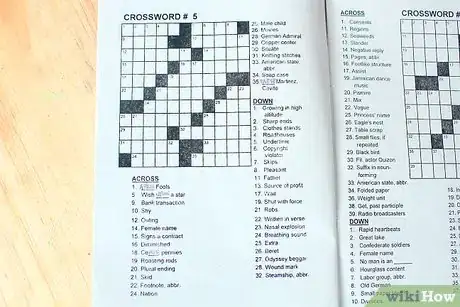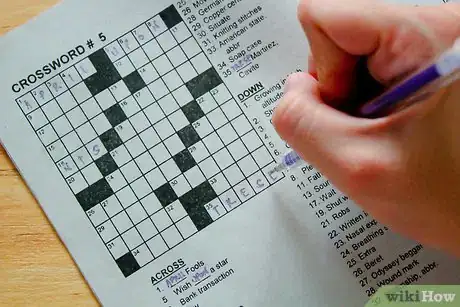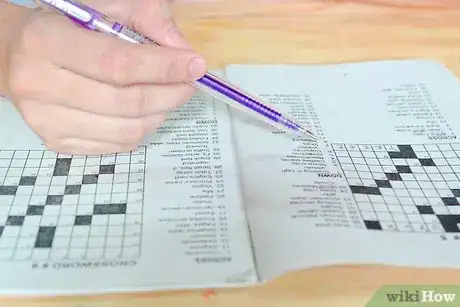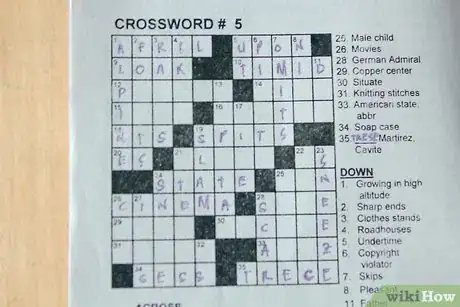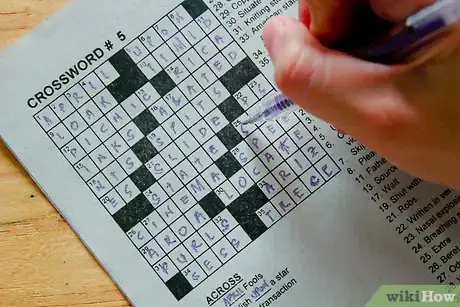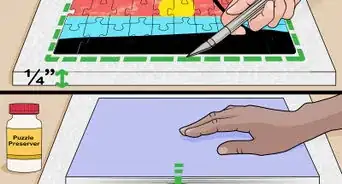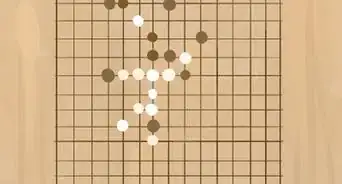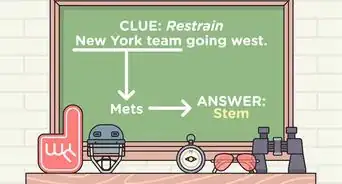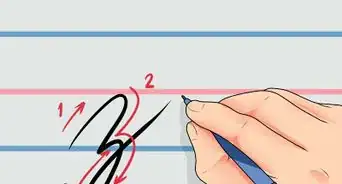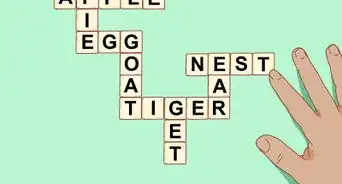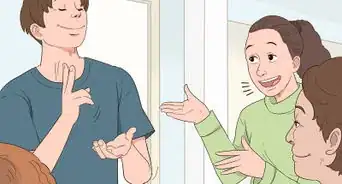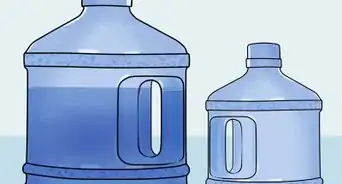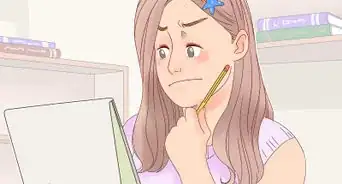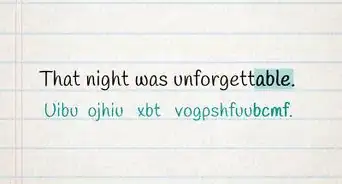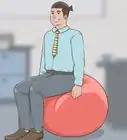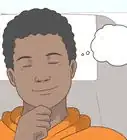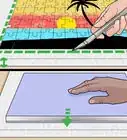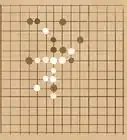X
wikiHow is a “wiki,” similar to Wikipedia, which means that many of our articles are co-written by multiple authors. To create this article, 33 people, some anonymous, worked to edit and improve it over time.
There are 8 references cited in this article, which can be found at the bottom of the page.
This article has been viewed 110,923 times.
Learn more...
Crossword puzzles are an extremely popular pastime. In addition, they sharpen the brain and increase vocabulary. Graded from "easy" to "difficult", some seem almost impossible to complete. It is recommended that novices start with the "easy" ones and progress, up the ladder, step by step. Get a sharpened pencil or two and an eraser, but first, read on.
Things You Should Know
- Fill-in-the-blank clues are generally the easiest.
- Look for the theme of the puzzle and use that to help you solve confusing clues.
- Study missing letters carefully to find potential options.
- Review the puzzle when you’re done to make sure you haven’t made any mistakes.
Steps
-
1Solve the fill-in-the-blank clues first, as they're usually easier than the others. Then, you'll have a network of answers from which to work. Solve as many of the squares as you can from the network, and then start at the #1 box, across, then down. Fill in the word if it fits both directions. Then do the same with the next box until you fill in the words you are sure of. If unsure, write your potential letters very lightly inside the boxes. Continue like this, filling in words you are unsure of, but fit into the down and across boxes.[1]
-
2Return to the start, making a second pass through the clues. Now that you have a few letters pencilled in, a correct answer might just pop up in your memory. Ensure that the letters fit into the other numbered boxes as well. It is not a correct word, remember, unless it fits perfectly with every box number it touches.[2]Advertisement
-
3Repeat these steps until the puzzle is solved or until completely stumped. Now the fun begins as you start to find the letters for each remaining word.[3]
-
4Spend a long time thinking about the "theme" clues. Often, this is key to puzzle solving. For example, if the theme clues are based on famous crossword puzzlers and you do not know much about it, look up "crosswords" on Wikipedia.[4]
-
5Study the missing letters. There are only just so many syllables in the English language and only a few letters will work with both of the words that cross. Take guesses and see if they fit.[5]
-
6Review the puzzle and the clues you missed or clues you derived without any knowledge of the subject. Put these to memory.[6]
Advertisement
Community Q&A
-
QuestionIf I do a puzzle in parts with breaks in between, will it still help improve my memory?
 Community AnswerYes, it should.
Community AnswerYes, it should. -
QuestionHow do I find a good strategy to complete a crossword puzzle?
 Community AnswerAnswer the clues you know first, then work from those.
Community AnswerAnswer the clues you know first, then work from those. -
QuestionLate 1940s - late 1960s child is called what?
 DonaganTop AnswererA baby-boomer.
DonaganTop AnswererA baby-boomer.
Advertisement
Things You'll Need
- Crossword Puzzle
- Pencils
- Crossword Dictionary (optional)
References
- ↑ https://www.dummies.com/games/crossword-puzzles/tips-for-solving-crossword-puzzles/
- ↑ https://www.youtube.com/watch?v=FeixN2jBIMc
- ↑ https://lifehacker.com/how-to-get-better-at-crosswords-1832638869
- ↑ https://www.youtube.com/watch?v=edgpOYJKxfw
- ↑ https://www.businessinsider.com/how-to-improve-your-crossword-puzzle-skills-2016-4
- ↑ https://www.businessinsider.com/crossword-puzzle-strategies-tips-2019-2
- Wired Magazine - Original source of this article. Shared with permission. Originally written by American Crossword Tournament champ Tyler Hinman.
- Daily Crossword
About This Article
Advertisement

